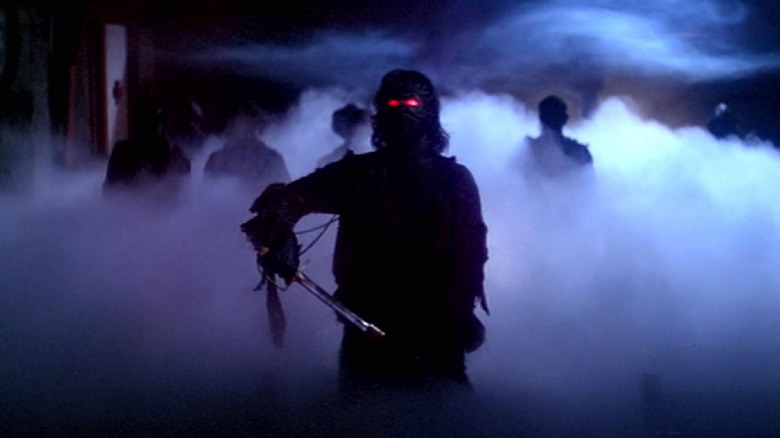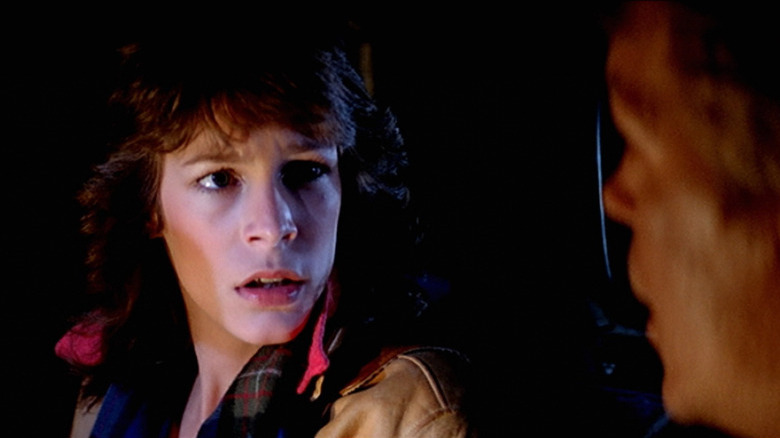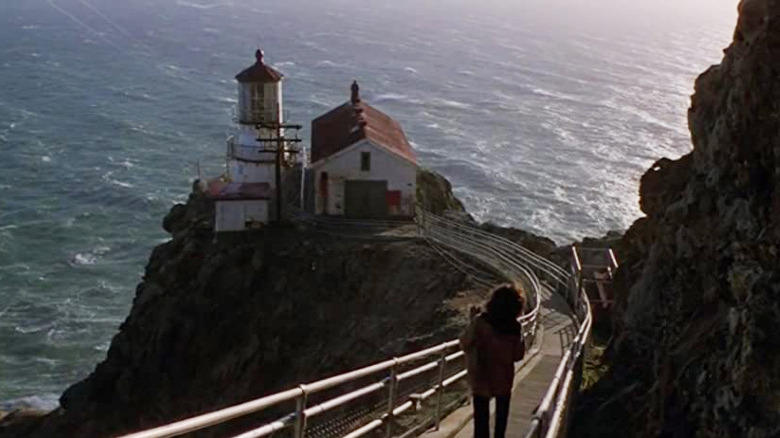The Daily Stream: The Fog Proves Some Of The Best Ghost Stories Are The Simplest
(Welcome to The Daily Stream, an ongoing series in which the /Film team shares what they've been watching, why it's worth checking out, and where you can stream it.)
The Movie: "The Fog" (1980)
Where You Can Stream It: Available to rent on Prime Video, Vudu, YouTube
The Pitch: In 1977, director John Carpenter and his writing/producing partner Debra Hill were in England to promote their first collaboration, "Assault on Precinct 13," when they decided to pay a visit to Stonehenge. In her and Carpenter's audio commentary for the 2002 DVD release of "The Fog" (via SyFy Wire), Hill recalled how this trip would inspire their 1980 supernatural horror movie:
"I remember [this fog] was just sitting on the horizon way past Stonehenge, and John said to me, 'What if there's something in that fog? Wouldn't that be scary?' and that's how it sort of evolved."
The duo would go on to mine other sources for inspiration, including the horror films of Val Lewton and a real-life incident in the 19th century involving The Frolic, a ship carrying gold that met its doom off the coast of California. These elements are readily apparent in "The Fog," a film that takes place in the fictional Californian coastal town of Antonio Bay in 1980 on the eve of its centennial birthday. But just as the festivities are about to begin, the sleepy settlement is beset by a series of bizarre incidents in the dead of night (glass randomly shatters, electronic devices go haywire). All the while, a mysterious fog from the ocean moves against the wind, carrying far more than water droplets...
Why it's essential viewing
Although a box office success, "The Fog" was initially perceived as something of a disappointment after Carpenter and Hill's 1978 breakout hit — a little slasher movie known as "Halloween." It's not hard to see why, either, looking back with the benefit of hindsight. The horror in "Halloween" is easier to grasp. It's a film about the ways small-town life inoculates you from the fear that anything unfathomably bad will happen to you, like a masked killer breaking into your home and butchering you and your loved ones. As far-fetched as Michael Myers might be in terms of his super-human durability and strength, he's a grounded threat relative to the salty spectres in "The Fog."
The deeper terror of "The Fog" doesn't come from its vengeful ghosts, who look a little hokey up close anyway (charmingly so, mind you). They're creepy but you don't really fret about them breaking into your house the way you do with The Shape, if only because they're usually polite enough to knock first. No, what's truly distressing about "The Fog" is the way it taps into our collective fears that the lives we have were built on the pain and suffering of others. We may not be responsible for the sins of those who came before us, but what if the universe were to find a way of balancing the scales? Could we honestly argue we didn't have it coming?
For as scary as the idea of fog hiding something terrible is on a purely instinctive level, it's that notion of otherworldly retribution that gives "The Fog" its true power. It's little wonder the movie is often described as being inspired by H.P. Lovecraft (whose themes of cosmic horror have reared their head time and time again in Carpenter's work).
'Look for the fog'
Setting aside all this talk of lofty concepts, "The Fog" works because it proves some of the best ghost stories are the simplest. The film is an exercise in economic storytelling, from its mood-setting prologue (where an old man spins spooky fans for a group of kids in front of a campfire on the beach) to the way it quickly makes its characters feel like real people with lives that existed long before the movie began. By the time the fog fully descends on Antonio Bay, you feel like you've known its leads for far longer than you have and are invested in their fates.
"The Fog" also looks a good deal more expensive than its indie budget would suggest thanks to legendary director of photography Dean Cundey. Carpenter and Cundey shot the movie in the anamorphic 2.35:1 format and paint in every corner of the frame, giving the film's exteriors the appearance of sinister panoramas and its interiors a suffocating quality (as though to imply there's no place to hide, once the ghosts get inside). Carpenter has admitted he worried "The Fog" would struggle to compete with the gorier horror films being made right before its release, yet time has proven he was right to emphasize atmosphere over bloodshed.
There's plenty more to appreciate about "The Fog," like its legacy casting (Jamie Lee Curtis, hot off her film feature debut as Laurie Strode, co-stars opposite her mother and "Psycho" star Janet Leigh), Adrienne Barbeau shining as the sharp-witted radio DJ Stevie Wayne, and even Carpenter's uncredited cameo early on. But above all else, it's nice to know the movie has found the appreciation it always deserved these past 40-plus years. As "The Fog" reminds us, we neglect to right the wrongs of the past at our own peril.


